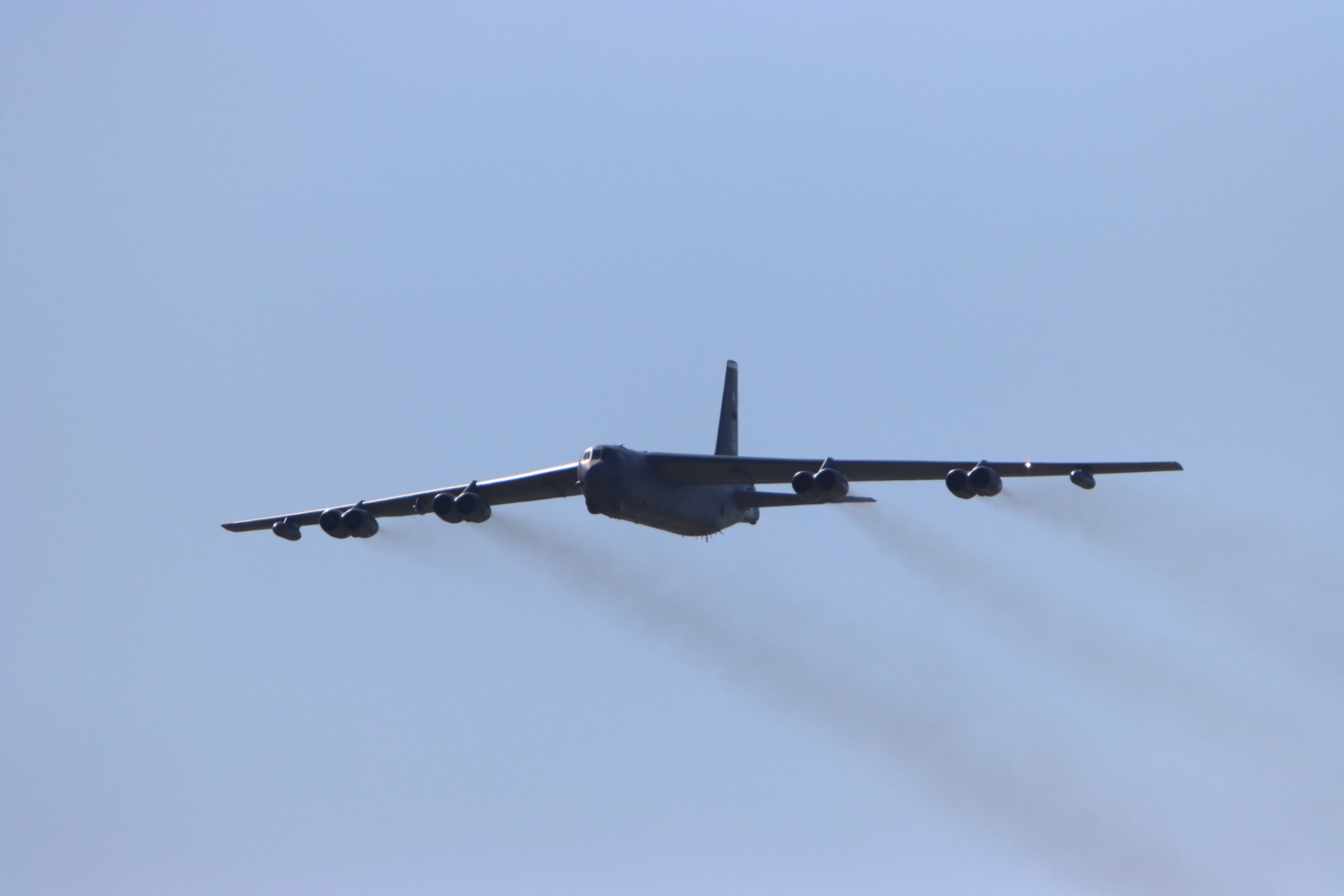Warszawa 2025-09-29
Boeing B-52 intercontinental bomber.
The American Boeing B-52 bomber is an older generation aircraft, but thanks to its durable design, armament capacity, and range, it remains a significant strike force for the USAF. Since Poland joined NATO on March 12, 1999, B-52 aircraft have played a vital role in deterring rogue activities by the Moscow state.
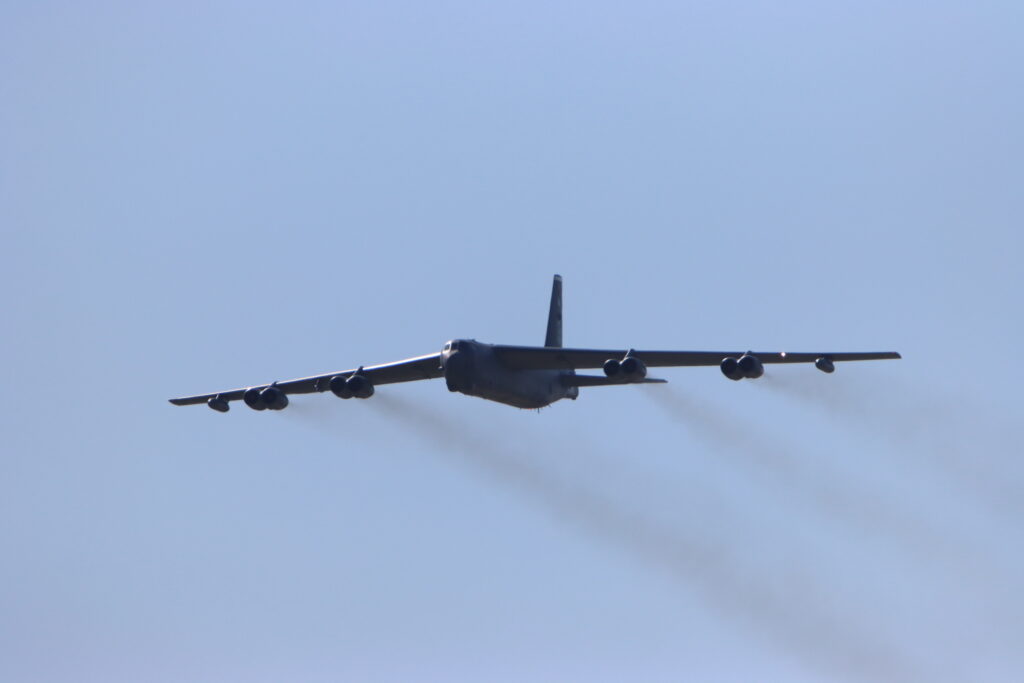
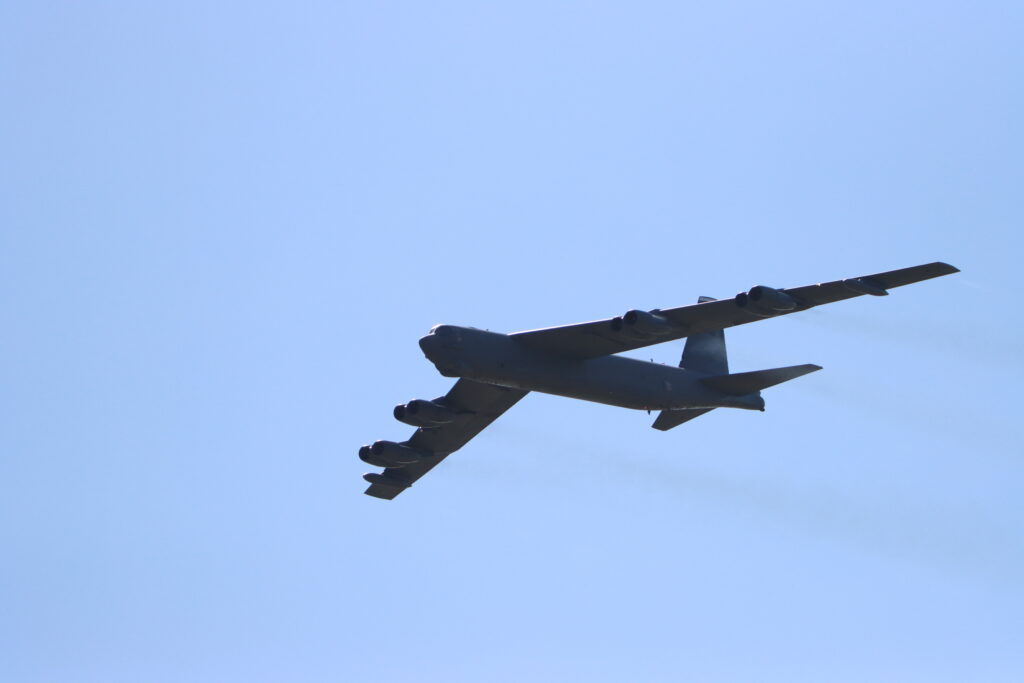
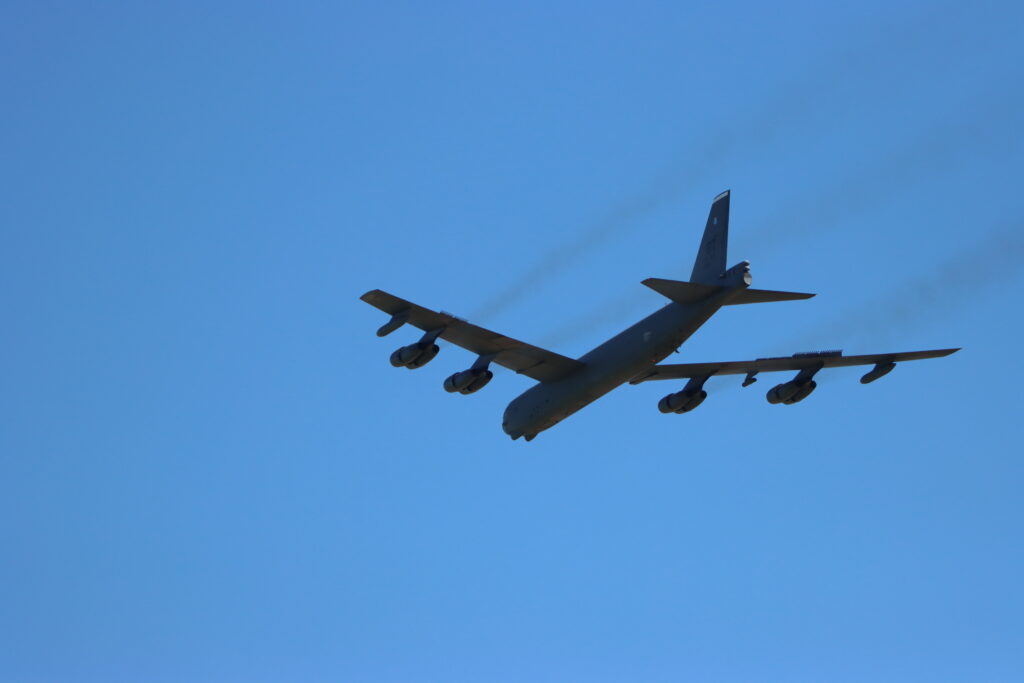
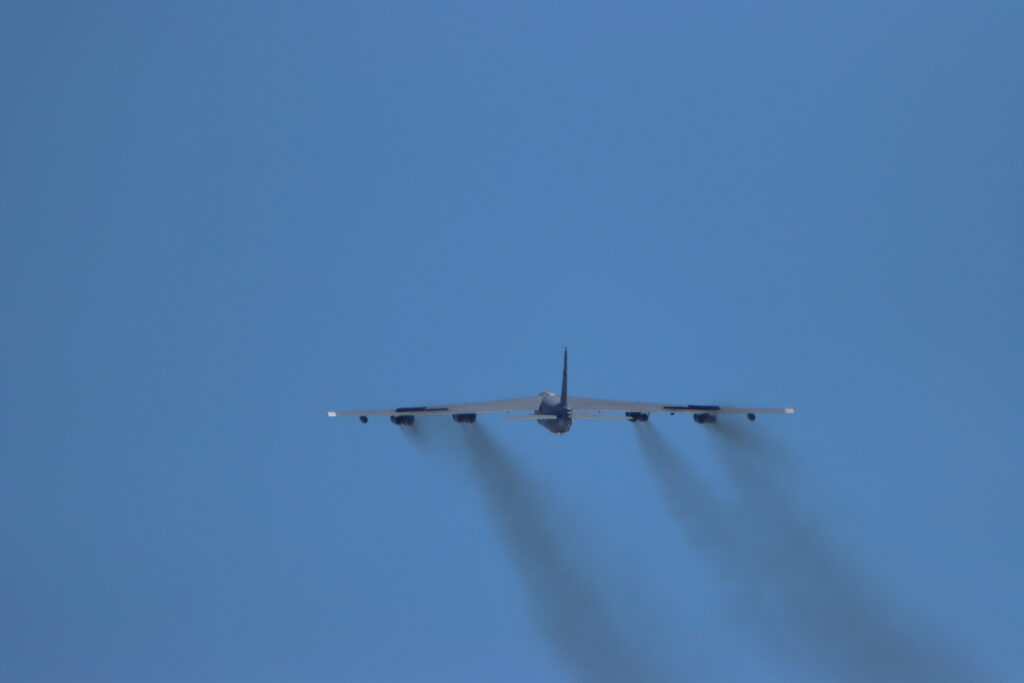
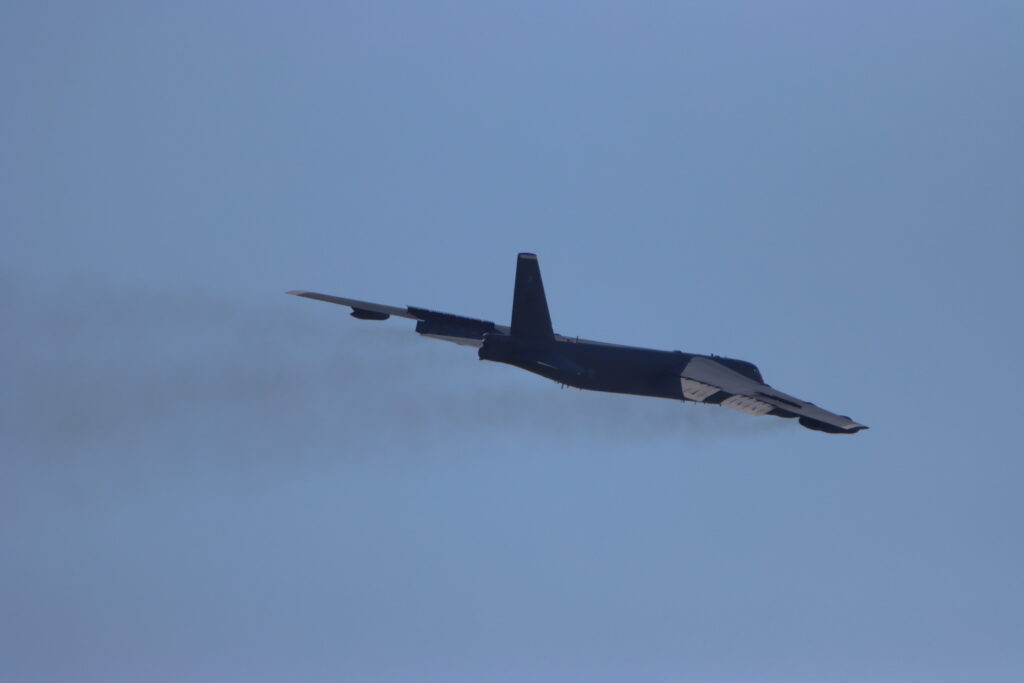
Boeing began work on the future B-52 bomber as early as 1946. The aircraft was developed under the company designation Model 426. Initially, designers planned to replicate the concepts of the B-29 bomber. The new aircraft was planned to have straight wings and be equipped with six turboprop engines. Over the following months, the design underwent gradual changes. Ultimately, swept wings with a 35-degree sweep angle were adopted. The question of powerplant was resolved with the development of the successful Pratt-Whitney J-57 turbojet engines.
It should be noted that, in parallel, Convair was developing a competing bomber, the YB-60. This bomber was based on the B-36 design, but, like the B-52, it was equipped with swept wings and eight turbojet engines.
A contract was ultimately signed for the construction of the XB-52 prototype, designated Model 464-67 by Boeing. The prototype was powered by eight Pratt-Whitney YJ57-P-3 engines, producing eight 38.71 kN of thrust. The aircraft’s crew consisted of five pilots: two pilots, one gunner in the tail turret, and two operators in the cockpit below the cockpit. On the night of November 29, 1951, the prototype was towed from the assembly hall and placed in a hangar. Field trials lasted 10 months. During this time, a second prototype, designated YB-52, was built, and it first flew on April 15, 1952. After a series of flight tests, the decision was made to proceed with series production. The aircraft was designated the Boeing B-52 Stratofortress. In February 1955, the aircraft entered service with the USAF. Production ended in 1962, after 744 units had been built. Currently (2025), Boeing continues to provide support and modernization for the aircraft. Operation of the B-52 is planned until 2050. As of 2020, 76 B-52s were in USAF service. This number includes aircraft in long-term storage at Davis-Monthan AFB Boneyard.
Fortune favored the B-52s. Convair B-58 Hustler bombers did not last even 10 years in service. North American XB-70 Valkyrie bombers never entered service. Rockwell B-1 Lancer and Northrop Grumman B-2 Spirit bombers entered service in small numbers.
Boeing B-52 versions:
B-52A – 3 examples. First built on March 18, 1954, and first flown on August 5, 1954. Powered by the J57-P-9W. Maximum takeoff weight: 176,900 kg. The cockpit was traditional – a tandem configuration. These aircraft were converted to the NB-52A to carry rocket-propelled aircraft, primarily the X-15.
B-52B – 33 examples. First flight: January 25, 1955. More powerful engines – 19W, -29W, and -29WA. Maximum weight: 204,120 kg. In January 1957, three aircraft completed a circumnavigation of the globe at an average speed of 837 km/h, refueling in mid-air.
RB-52B – 27 examples. Reconnaissance aircraft. B-52C – 35 built. First flight on March 9, 1956. 29W engines.
B-52D – 170 built, 69 of which were built in Wichita, Kansas. First flight on May 14, 1956.
B-52E – 42 built in Seattle and 58 in Wichita. First flight on October 3, 1957.
B-52F – 44 Seattle and 45 Wichita. First flight on May 6, 1958. 43W engines.
B-52G – 196 Wichita. Vertical stabilizer modified, fuel tank capacity increased.
B-52H – Most modernized version. First flight on September 30, 1960. TF33-P-3 turbofan engines with 8 x 75.6 kN thrust. A 6-barrel cannon replaced the machine guns in the tail. 102 built.
B-52 production ended on June 22, 1962, after 744 built. Versions D, E, and F saw combat use in Vietnam.
B-52 Design
Crew: 5 (pilot-captain, co-pilot, weapons systems officer, navigator, electronic warfare officer). The B-52 is a heavy intercontinental bomber. It has a high-wing design. The wings are swept at 35 degrees, with a negative lift of 3 degrees and an aspect ratio of 8.5, and are multi-spar. The fuselage uses a NACA 63A219.3 airfoil, and the tail section uses a NACA 65A209.5. Fuel capacity: 47,975 U.S. gallons (39,948 imp gal; 181,610 l).
The aircraft’s fuselage is oval in cross-section. The pressurized cabin is double-deck. Pilots sit in ejection seats on the upper deck, and on the lower deck, downward. They enter through a lower hatch with a ladder. Two pilots and, in older versions, a radio operator sit on the upper deck. On the lower deck sit a navigator, radar operator, electronics operator, and, in the -G and -H versions, a gunner. At the rear of the fuselage is a 14.6 m diameter drogue parachute container.
The conventional tail is attached to the fuselage. The vertical tail has a 40-degree angle of attack.
The bicycle-type landing gear is assembled from four identical units. Each unit consists of a strut and two wheels on one axle, forming a front and rear pair. In these configurations, one landing gear retracts forward, the other rearward. The nose gear is steerable, and before landing, after extending the wheels, they can all be adjusted by up to 20 degrees to prevent crosswind drift. The auxiliary landing gear consists of single wheels on a half-fork and a long strut that retract along the wing, toward the fuselage. Initially, the B-52 was equipped with a cockpit in which the pilots sat one behind the other. At the beginning of series production, the cockpit layout was changed. The shape of the vertical tail was modified during production. Powerplant: Eight Pratt & Whitney TF33-P-3/103 turbofans, 8 x 17,000 lbf (8 x 76 kN) thrust.
Armament: 1 × 20 mm (0.787 in) M61 Vulcan cannon, originally mounted in the remotely controlled tail turret of the H model, removed in 1991 from all operational aircraft. Bomb load: approximately 70,000 pounds (32,000 kg) in a combined configuration: bombs, mines, and missiles.
Equipment: Electro-optical viewing system using forward-looking platinum silicide infrared and high-resolution, low-light television sensors. LITENING targeting system and SNAJPER targeting system. On-board IBM AP-101 computer.
T-T B-52A specifications:
Wingspan: 56.39 m. Length: 48.03 m. Height: 14.75 m. Empty weight: 90,000 kg. Maximum weight: 176,900 kg. Maximum speed 957 km/h. Cruise speed 819 km/h. Service ceiling 16,765 m.
T-T B-52 G data:
Span 56.39 m (185 ft 0 in). Length 48.50 m (159 ft 4 in). Height 12.40 m (0 ft 8 in). Wing area 4,000 sq ft (370 m²). Empty weight 83,250 kg (185,000 lb). Maximum weight 221,323 kg (488,000 lb). Maximum speed 957 km/h. Maximum speed 650 mph (1,050 km/h, 560 knots). Cruise speed 509 mph (819 km/h, 442 knots). Service ceiling 16,765 m. Range 14,200 km, without aerial refueling. Combat range 8,800 miles (14,200 km, 7,600 nautical miles). Ferry range 10,145 miles (16,327 km, 8,816 nautical miles).
Written by Karol Placha Hetman

